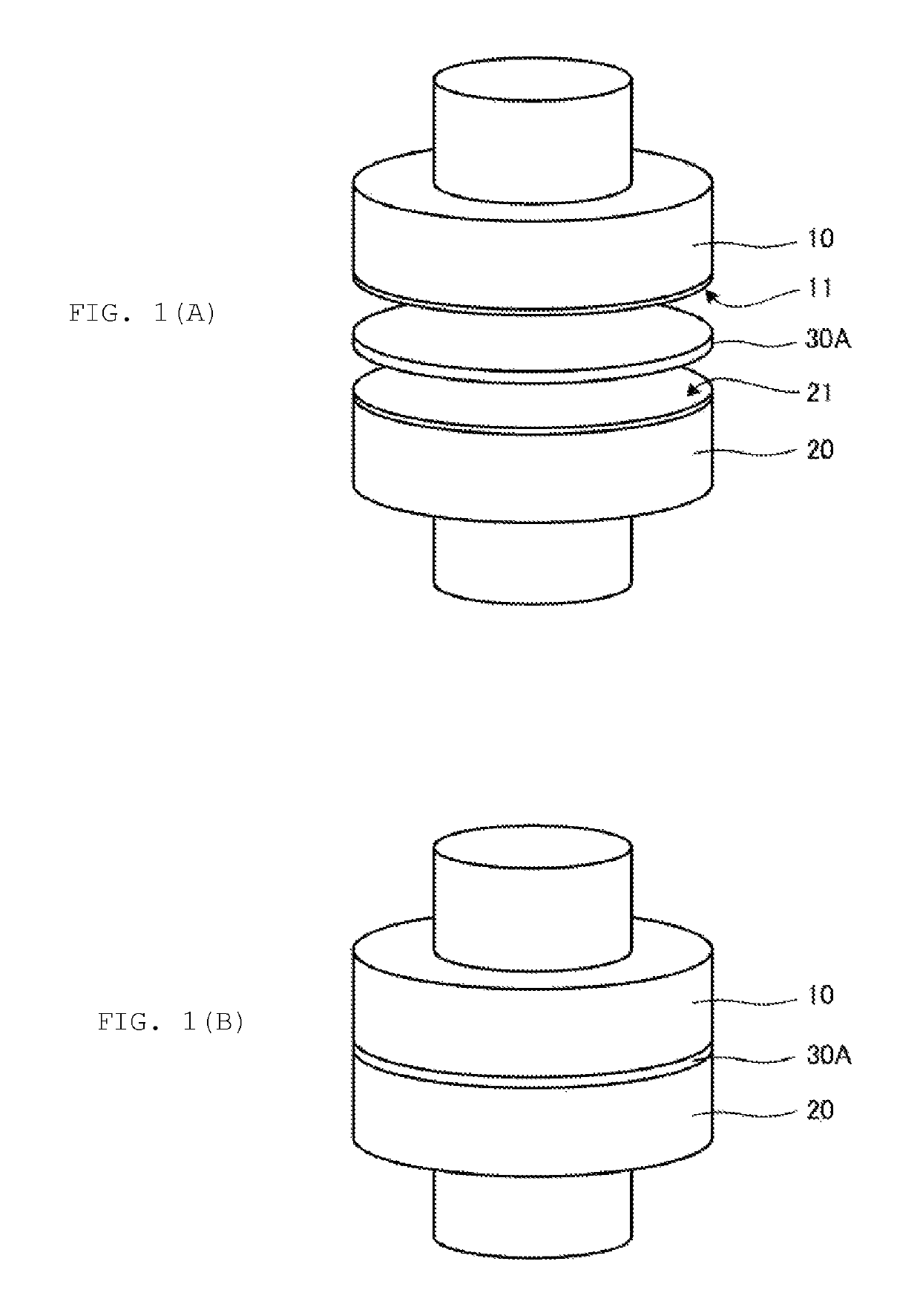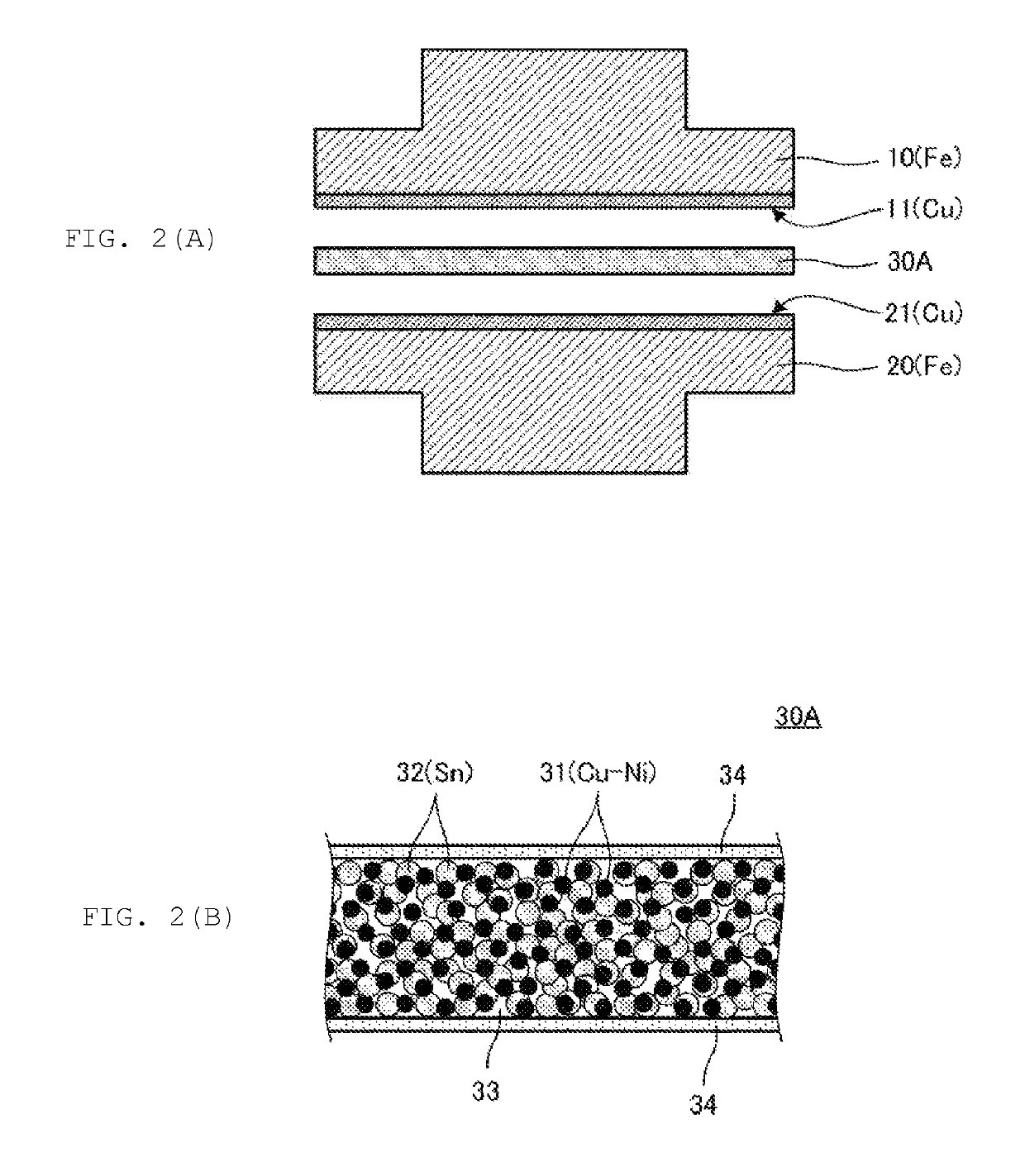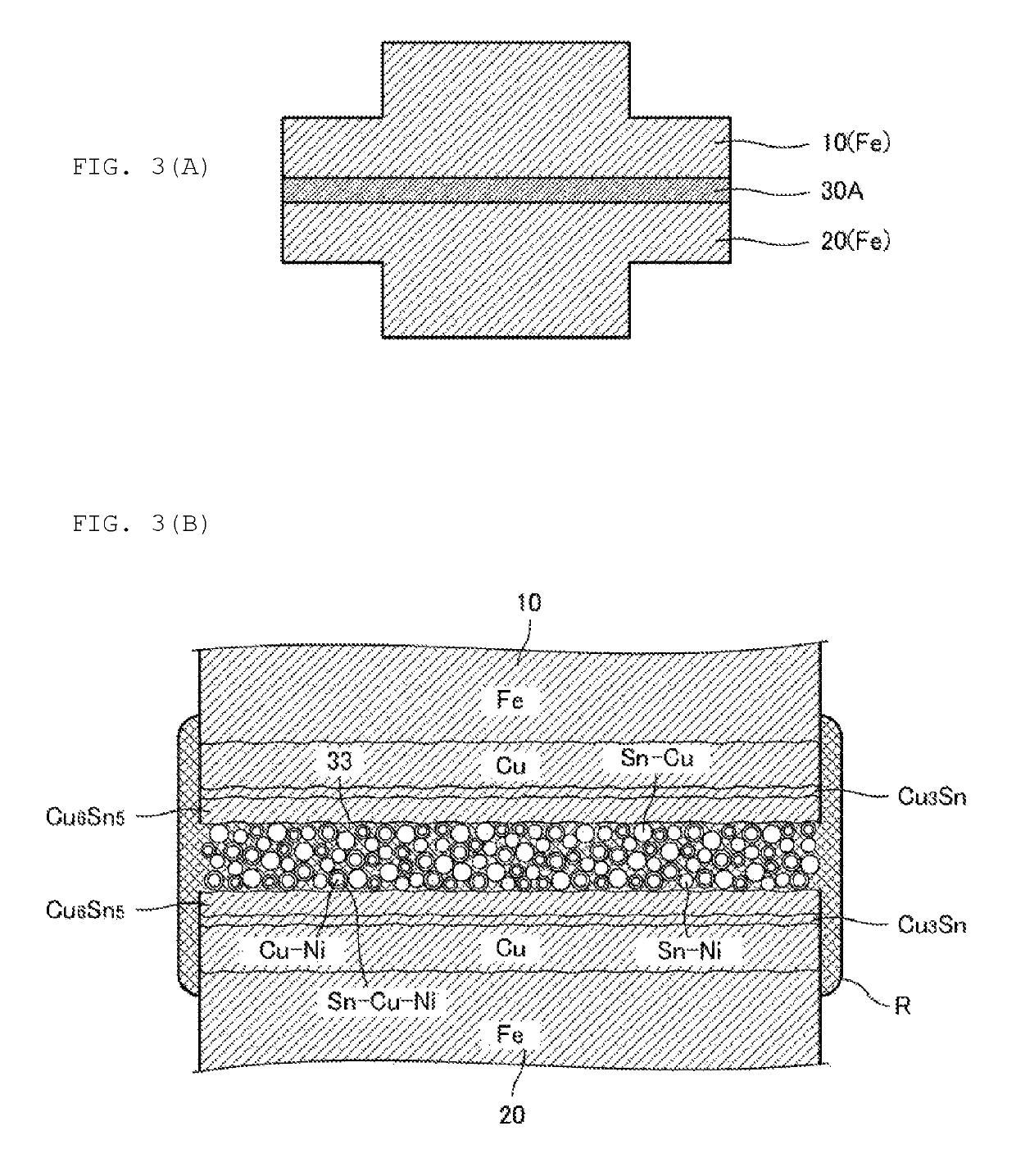Method for joining structural material, joining sheet, and joint structure
a structural material and joint structure technology, applied in the direction of soldering equipment, furnaces, heat treatment equipment, etc., can solve the problems of difficult to join the members together in a short time, and high temperature, and achieve easy destruction by external stress, short time, and deteriorating resistance to stress
- Summary
- Abstract
- Description
- Claims
- Application Information
AI Technical Summary
Benefits of technology
Problems solved by technology
Method used
Image
Examples
first embodiment
[0029]A method for joining structural materials together, a joining material and a joint structure of a first embodiment will be described in reference to FIG. 1 to FIG. 4.
[0030]FIG. 1(A) is a perspective view showing a state before joining of a first structural material 10, a second structural material 20 and a joining material 30A to be joined together. FIG. 1(B) is a perspective view showing a state after joining. FIG. 2(A) is a sectional view showing a state before joining of a first structural material 10, a second structural material 20 and a joining material 30A to be joined together. FIG. 2(B) is an enlarged sectional view of the joining material. FIG. 3(A) is a sectional view showing a state after joining of a first structural material 10, a second structural material 20 and a joining material 30A. FIG. 3(B) is an enlarged sectional view of a joint portion.
[0031]The structural materials are scaffold materials of, for example, body frames, architectural structure, or machine...
second embodiment
[0053]A method for joining structural materials together, a joining material and a joint structure of a second embodiment will be described in reference with FIG. 5 and FIG. 6.
[0054]FIG. 5(A) is a sectional view showing a state before joining of a first structural material 10, a second structural material 20 and a joining material 30B to be joined together. FIG. 5(B) is an enlarged sectional view of the joining material. FIG. 6(A) is a sectional view showing a state after joining of a first structural material 10, a second structural material 20 and a joining material 30B. FIG. 6(B) is an enlarged sectional view of a joint portion.
[0055]The first structural material 10 is, for example, a steel material, and a plating film 12 of a Cu—Ni alloy which is a high melting point metal is formed on a joint surface. Similarly, the second structural material 20 is, for example, a steel material, and a plating film of a Cu—Ni alloy 22 is formed on a joint surface. In addition, when each structu...
third embodiment
[0070]A method for joining structural materials together, a joining material and a joint structure of a third embodiment will be described in reference with FIG. 7 and FIG. 8.
[0071]FIG. 7(A) is a sectional view showing a state before joining of a first structural material 10, a second structural material 20 and a joining material 30C to be joined together. FIG. 7(B) is an enlarged sectional view of the joining material. FIG. 8(A) is a sectional view showing a state after joining of a first structural material 10, a second structural material 20 and a joining material 30C. FIG. 8(B) is an enlarged sectional view of a joint portion.
[0072]The first structural material 10 is, for example, a steel material, and a Sn-plating film 13 which is a low melting point metal is formed on a joint surface. Similarly, the second structural material 20 is, for example, a steel material, and a Sn-plating film 23 is formed on a joint surface. In addition, when each structural material is, for example, ...
PUM
| Property | Measurement | Unit |
|---|---|---|
| softening temperature | aaaaa | aaaaa |
| heat resistance | aaaaa | aaaaa |
| area | aaaaa | aaaaa |
Abstract
Description
Claims
Application Information
 Login to View More
Login to View More - R&D
- Intellectual Property
- Life Sciences
- Materials
- Tech Scout
- Unparalleled Data Quality
- Higher Quality Content
- 60% Fewer Hallucinations
Browse by: Latest US Patents, China's latest patents, Technical Efficacy Thesaurus, Application Domain, Technology Topic, Popular Technical Reports.
© 2025 PatSnap. All rights reserved.Legal|Privacy policy|Modern Slavery Act Transparency Statement|Sitemap|About US| Contact US: help@patsnap.com



